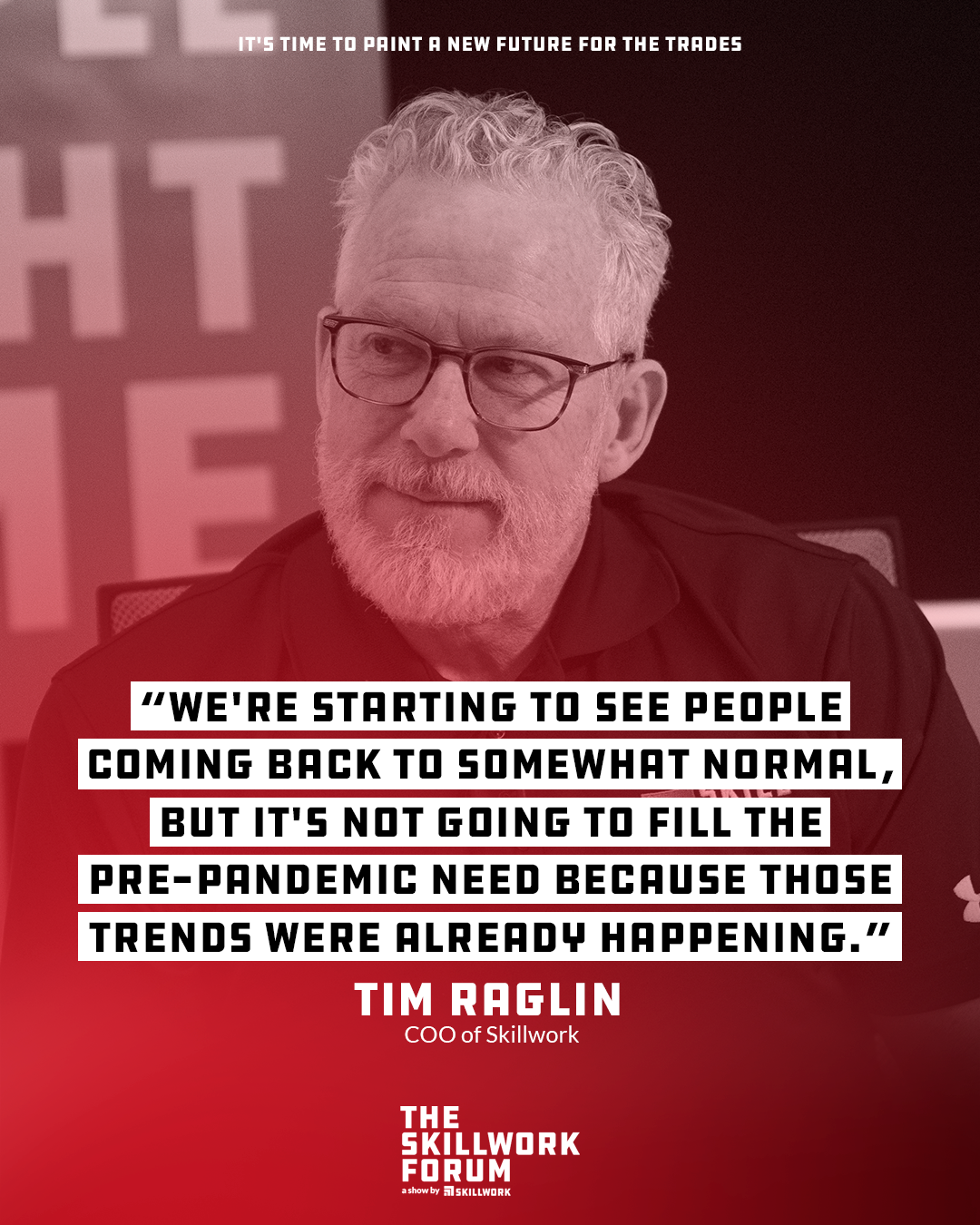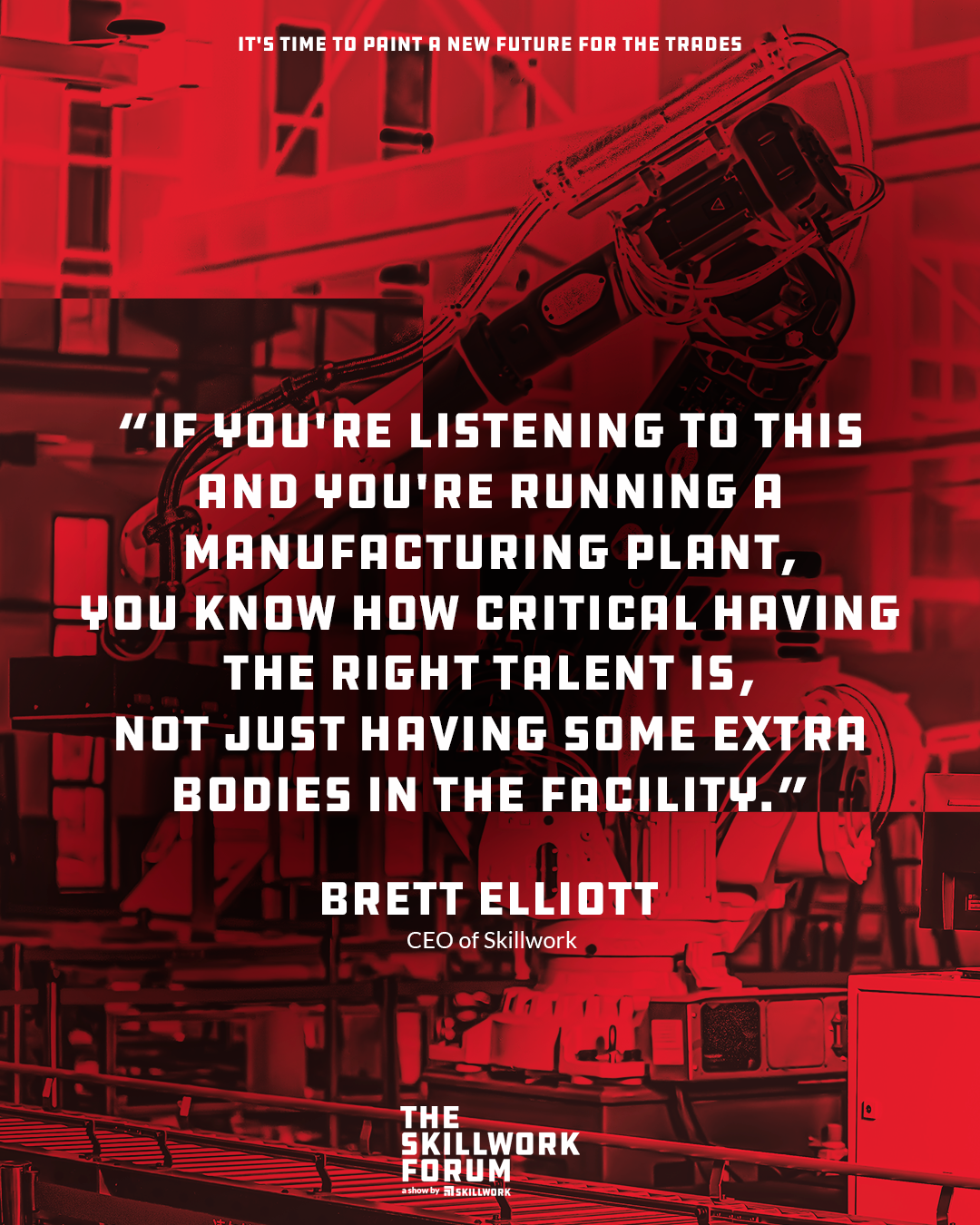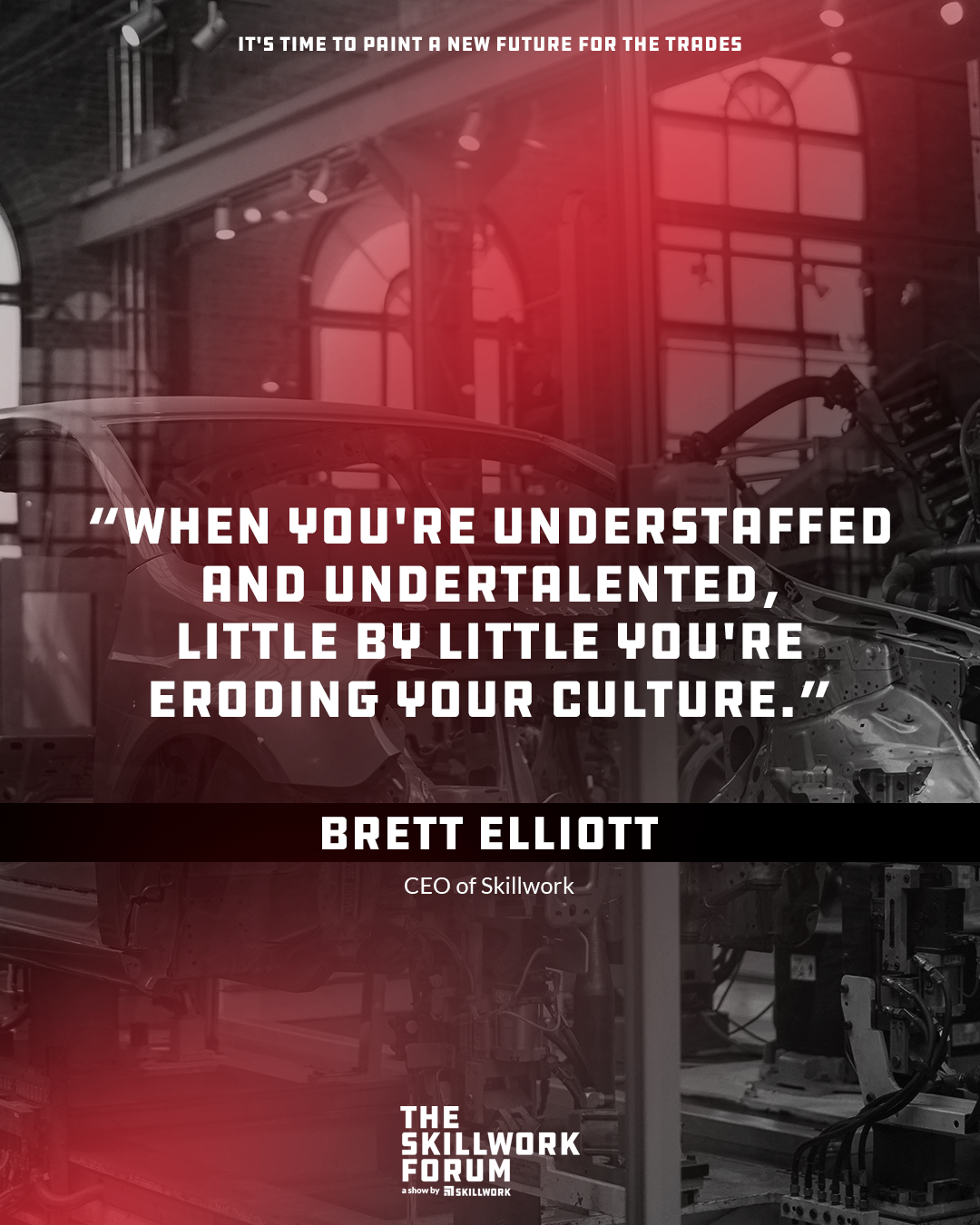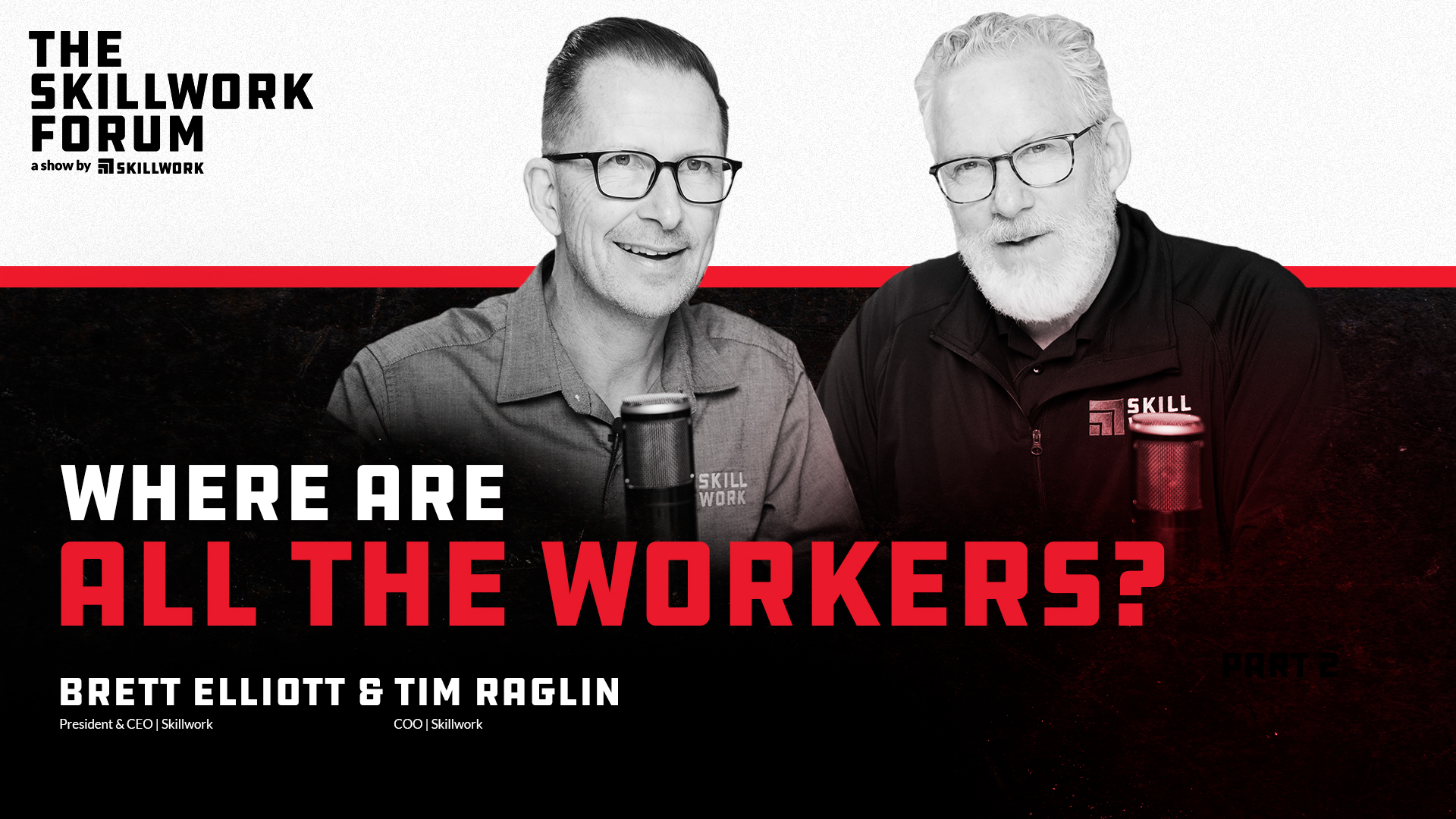The Labor Shortage In The United States: Why Are American Workers Becoming Harder to Find?
If you desire you can listen this episode on Spotify.
Remember the Bruce Springsteen song, Glory Days? He talked about everybody wanting to relive the way things were in the past. In terms of the trades, we think a lot of people are caught up in this same idea, romanticizing what used to be: the way we used to be able to acquire talent, be fully staffed, retain workers, etc.
So, before we jump into painting what the future looks like and how we may be able to turn the tide and our thinking, let's take a peek at how we got here in the first place.
Skilled Trades Shortage Stats
The skilled trades shortage didn’t happen overnight. But, as we say, the reality is it's a numbers game right now. Some of these points are skilled trades shortage stats, while others encompass the labor shortage in the United States as a whole. Regardless, these talent shortage statistics show that our country is in desperate need of those willing and able to work.
The ratio of Baby Boomers retiring to workers replacing them is 5:2.
One of the most concerning skilled trades shortage stats is the ratio of Baby Boomers retiring to Millenials and Gen Z entering the trades. For every five Baby Boomers that retire, only two candidates of younger generations are coming behind them. From that standpoint, it's just a simple math game. You got five leaving and two coming in, creating more and more of a hiring challenge.
But why is this the case? Well, one reason is the skilled trades stigma that’s been infiltrating young minds for decades.
Society has made earning a college degree the epitome of success.
For 20 years, society has made earning a college degree the end all be all. The primary question high school seniors get asked at graduation parties is, “Where are you going to college?” instead of, “What are you going to do?” As a result, young people are less inclined to specialize in the trades, making it difficult for employers to find skilled labor to replace the older generation.
58% of the workforce needs new skills to get their jobs done.
Many companies can’t wait for grads or trainees to fill their labor demands. We've done a few podcasts on this topic, but we’re well into the Fourth Industrial Revolution (4IR), which is a strong move toward automation and digital transformation on the manufacturing floor. This automation was needed, but it's also creating a skills gap, which is part of the issue as well. So not only do you have a people gap, but a people with the right skills gap.
The workforce participation rate is only 62%.
We always talk about the unemployment rate, but, in our opinion, the more important talent shortage statistic is the workforce participation rate – the number of able-bodied people who are participating in the workforce or actively seeking work in our country.
Currently, the civilian labor force participation rate is hovering around 62%. That means 38% of eligible people could be working, but choose not to. And of that number, over 7 million able-bodied males from their mid-twenties to their mid-fifties are just sitting it out, not even looking for work.
You can learn more about this phenomenon by checking out our episode, Where Are All The Workers?
69% of business leaders expect 4IR tech will create new jobs.
The experts we're talking to in the field of automation, robotics, and AI are saying that 4IR is actually going to increase the number of skilled technicians that you need. And a fall 2019 PwC survey confirms it: 69% of business leaders expect 4IR tech will create new jobs. It may decrease the number of frontline production workers, but it's also going to free up and require higher-end skilled tradesmen and craftsmen.
Post-pandemic is the new normal; there’s no going back.

The skilled trades shortage was here before the pandemic and, if anything, was just exacerbated by it. Another thing we hear about all the time is going back to “normal” once we get post-pandemic. Well, we are post-pandemic, and though things have changed for the better (masks are optional, people are standing closer than 6 feet apart, etc.), the impact of the pandemic fundamentally changed the way we live and work.
It's crucial that we recognize what’s in the past and what we have to live with now. Based on everything we just talked about, how do you not just survive, but thrive?
Let’s Paint a New Future For The Trades
As you face this labor shortage, ask yourself, “Do I have a talent shortage, a skills shortage, or both?” More than likely, it's probably both. And the follow-up question then needs to be, “What's the future look like for me to solve the problem of both people and the people with the right set of skills?”
It’s not enough to have warm bodies fill your facility; you need workers to have the right skill sets for the trade skill jobs in demand today. Consider with us that the “Glory Days” of being fully staffed with those invested in your plant long-term isn’t a reality anymore—as much as we would like it to be.
When you're understaffed and under-talented, you're eroding your culture little by little and that's why you get into these constant retention issues and such. You have to start to say, “Is there something that's going to allow us to thrive versus just surviving the skilled trade shortage?”
So, what is the future?
- Hire local talent. Keep recruiting and partnering locally. Provide apprenticeships, great employee benefits, and quality that will allow you to build a strong reputation.
- Upskill current talent. Give your people – your most valuable asset – the additional training that they need to be able to move you into the Fourth IR.
- Partner with Skillwork. Having difficulty finding the right talent? Can’t afford to upskill? Find skilled workers with Skillwork – America’s premier skilled trades staffing agency.
Thank you for joining us for another episode of The Skillwork Forum discussing skilled trades shortage statistics!
We have another podcast as well called The Proud Skilled Worker, hosted by one of our guys here, Michael Peatrowsky. It's great if you want to hear the voice of the skilled worker and what they're thinking, we encourage you to go check that out.
Until next time, God bless you. 



